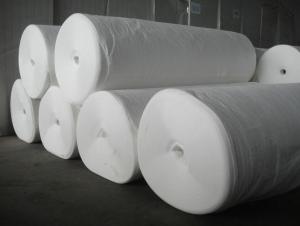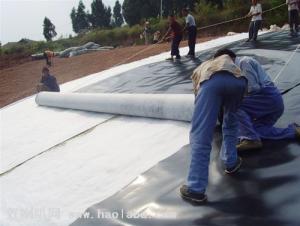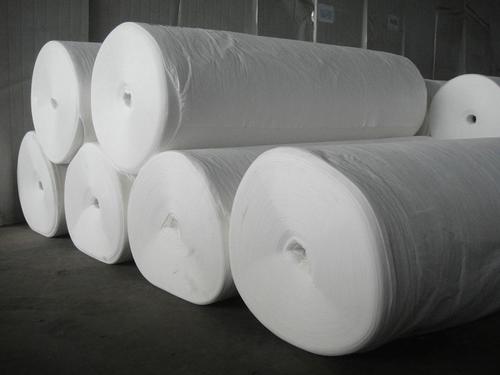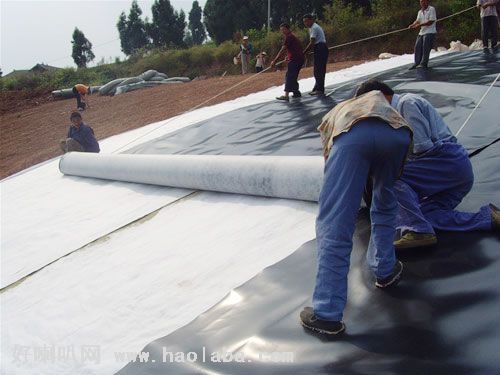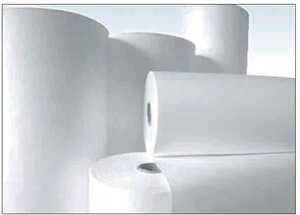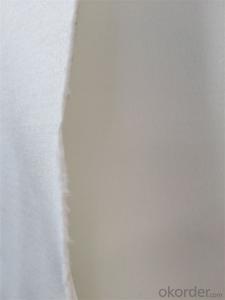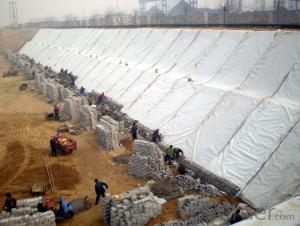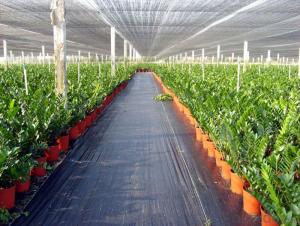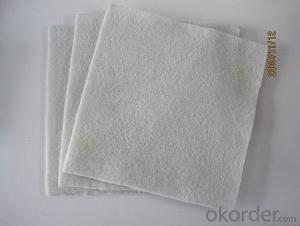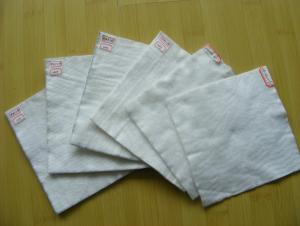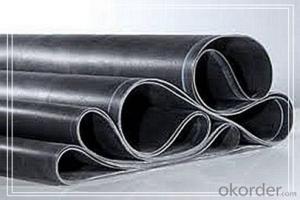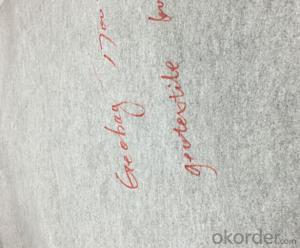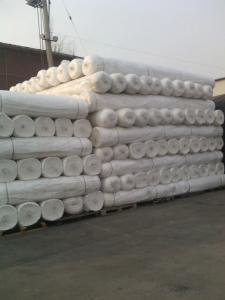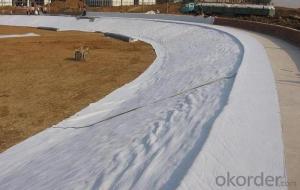4 Oz Non Woven Geotextile Fabric - Polyester Fiberglass Geotextile Fiberglass Roofing Tissue
- Loading Port:
- Tianjin
- Payment Terms:
- TT OR LC
- Min Order Qty:
- -
- Supply Capability:
- 5000rolls m²/month
OKorder Service Pledge
OKorder Financial Service
You Might Also Like
Polyester Fiberglass Geotextile fiberglassroofing tissue
It 's a new composite fiberglass cracking-resistant material, made of fiberglass and PET fiber by
Special process.
Specification ofPolyester Fiberglass Geotextile fiberglass roofing tissue:
Tensile strength: 5kN/m - 8kN/m
Property of PolyesterFiberglass Geotextile fiberglass roofing tissue:
I. Delaying the reflective crack
2. Provide super waterproof layer
3. Could be completely crushed and used for road regeneration
4. No shrink. Fiberglass geotextile has the ability of no deformation and noshrink under high
Temperature construction environment
5. No stretch. Fiberglass geotextile does not stretch deformation duringinstallation prog ress
Application of PolyesterFiberglass Geotextile fiberglass roofing tissue:
I. Cement concrete pavement reconstruction
2. Old road reconstruction and extension project
3. Asphalt concrete surface
4. Municipal road engineering with cover project
5. Semi-rigid base shrinkage crack disposal
6. Bridge deck waterproof layer
- Q: Are geotextiles suitable for use in erosion control socks?
- Yes, geotextiles are suitable for use in erosion control socks. Geotextiles provide effective erosion control by preventing soil erosion and promoting sediment retention. They are designed to withstand water flow while allowing water infiltration, making them an ideal choice for erosion control socks.
- Q: How do geotextiles contribute to land reclamation in coastal areas?
- Geotextiles contribute to land reclamation in coastal areas by acting as a barrier between the existing soil and the new land area. They help prevent erosion by stabilizing the soil, allowing vegetation to grow, and providing a foundation for the new land. Additionally, geotextiles can filter sediment and contaminants, improving water quality and protecting the surrounding ecosystem.
- Q: PET geotextile is what?
- PET for the polyester on behalf of the name, PET geotextile is also divided into many kinds, such as: broken geotextile, filament geotextile, filament weaving, etc., I understand only these. Look at what you mean.
- Q: Can geotextiles be used in wetland restoration projects?
- Yes, geotextiles can be used in wetland restoration projects. They are often utilized to stabilize the soil and control erosion, which is crucial in wetland areas. Geotextiles can also help retain sediments and filter water, aiding in the establishment and maintenance of the wetland ecosystem.
- Q: How do geotextiles interact with other geosynthetic materials?
- Geotextiles interact with other geosynthetic materials by providing reinforcement, filtration, separation, and drainage functions. They can be used in combination with geogrids, geomembranes, geocells, and other geosynthetics to enhance the overall performance and effectiveness of geotechnical engineering projects.
- Q: Planting roofing geotextile lap way
- Lap 10 cm, sewing with sewing machine, I specializing in the production of roofing with geotextile, drainage board and other products, wish smooth
- Q: Can geotextiles be used in seawall construction?
- Yes, geotextiles can be used in seawall construction. Geotextiles are commonly used in seawall construction as they provide reinforcement, erosion control, and filtration. They help to stabilize the soil, prevent erosion, and allow for proper drainage, making them a valuable component in the construction of seawalls.
- Q: Are geotextiles suitable for use in canal lining?
- Yes, geotextiles are suitable for use in canal lining. They are commonly used to reinforce and protect the canal lining from erosion, provide filtration, and improve drainage. Geotextiles offer durability, stability, and resistance to various environmental conditions, making them an effective solution for canal lining applications.
- Q: What is geotextile, what role
- Geotextile is a new type of building materials, raw materials are polyester, acrylic, nylon and other polymer polymer synthetic fiber. In accordance with the manufacturing method is divided into: there are two types of geotextile and non-woven geotextile. Geotextile with anti-seepage, anti-filtration, drainage, isolation, reinforcement, protection, sealing and other functions, it with the conventional masonry and concrete material seepage effect compared to a low investment, simple construction process, short duration Infiltration effect is good, the channel effective use of high coefficient. Water conservancy engineering dams and slope protection filter, channel isolation, seepage control; road, railway, airport runway foundation isolation, filter, drainage, slope, retaining wall and road reinforcement, drainage; , Geotextile has been widely used in the field of infrastructure construction, and has been gradually applied in the field of infrastructure construction, and the use of geotextile In a wider area.
- Q: What is the role of the laying of geotextiles at the bottom of the grassland?
- From the soil and soil, fixed slope protection, anti-erosion, anti-filter (over the water, but soil) and other effects, I professional production geotextile, geomembrane and other products, wish smooth
Send your message to us
4 Oz Non Woven Geotextile Fabric - Polyester Fiberglass Geotextile Fiberglass Roofing Tissue
- Loading Port:
- Tianjin
- Payment Terms:
- TT OR LC
- Min Order Qty:
- -
- Supply Capability:
- 5000rolls m²/month
OKorder Service Pledge
OKorder Financial Service
Similar products
Hot products
Hot Searches
Related keywords
